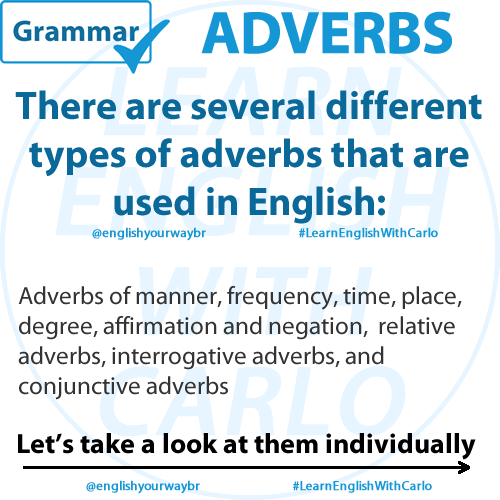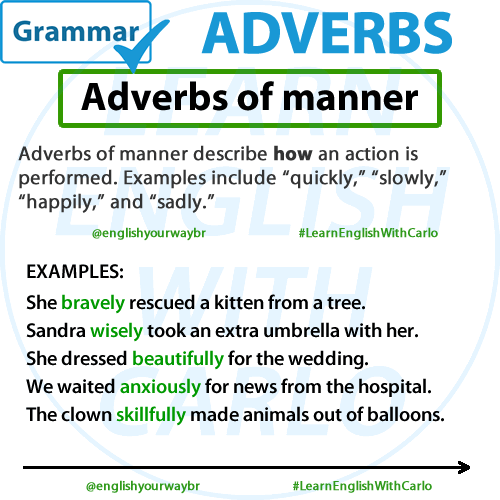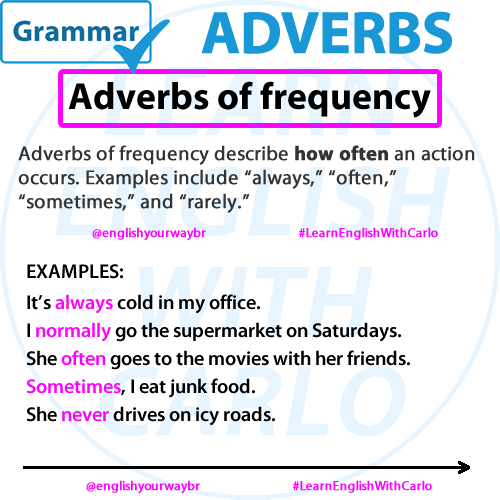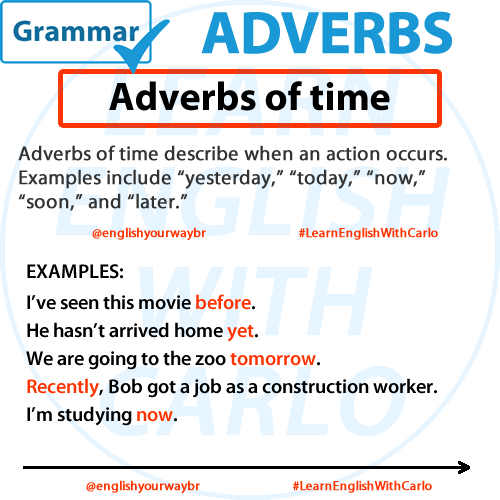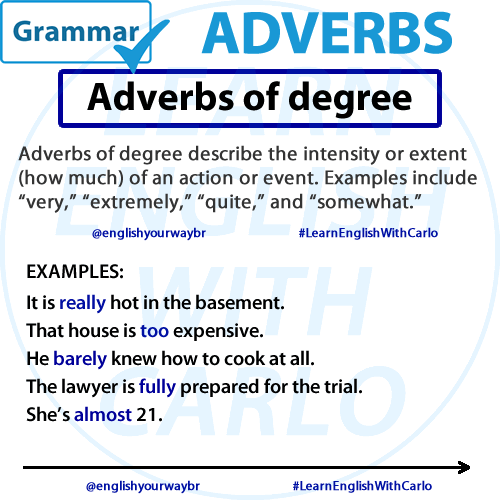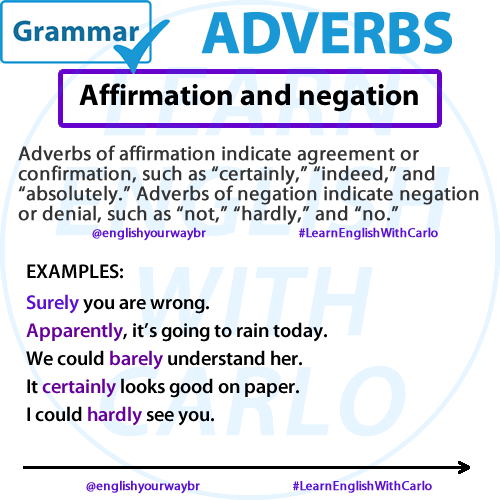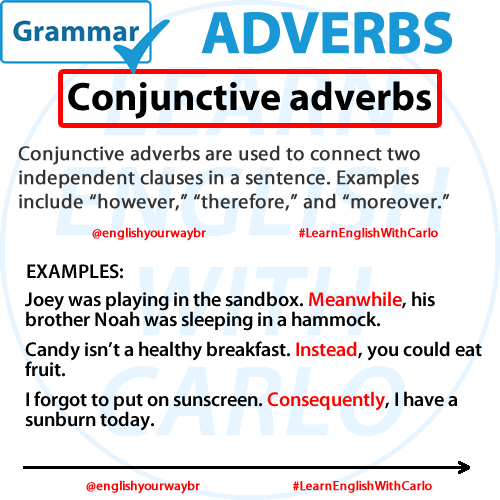An adverb is a word that modifies or describes a verb, adjective, or other adverb. It provides additional information about how, when, where, or to what extent an action or quality is performed. Several different types of adverbs are used in English:
- Adverbs of manner: Adverbs of manner describe how an action is performed. Examples include “quickly,” “slowly,” “happily,” and “sadly.”
- Adverbs of frequency: Adverbs of frequency describe how often an action occurs. Examples include “always,” “often,” “sometimes,” and “rarely.”
- Adverbs of time: Adverbs of time describe when an action occurs. Examples include “yesterday,” “today,” “now,” “soon,” and “later.”
- Adverbs of place: Adverbs of place describe where an action occurs. Examples include “here,” “there,” “everywhere,” and “nowhere.”
- Adverbs of degree: Adverbs of degree describe the intensity or extent (how much) of an action or event. Examples include “very,” “extremely,” “quite,” and “somewhat.”
- Adverbs of affirmation and negation: Adverbs of affirmation indicate agreement or confirmation, such as “certainly,” “indeed,” and “absolutely.” Adverbs of negation indicate negation or denial, such as “not,” “never,” and “no.”
- Interrogative adverbs: Interrogative adverbs are used to ask questions about time, place, manner, or reason. Examples include “when,” “where,” “how,” and “why.”
- Relative adverbs: Relative adverbs are used to connect two clauses in a sentence and indicate a relationship between them. Examples include “where,” “when,” and “why.”
- Conjunctive adverbs: Conjunctive adverbs are used to connect two independent clauses in a sentence. Examples include “however,” “therefore,” and “moreover.”
